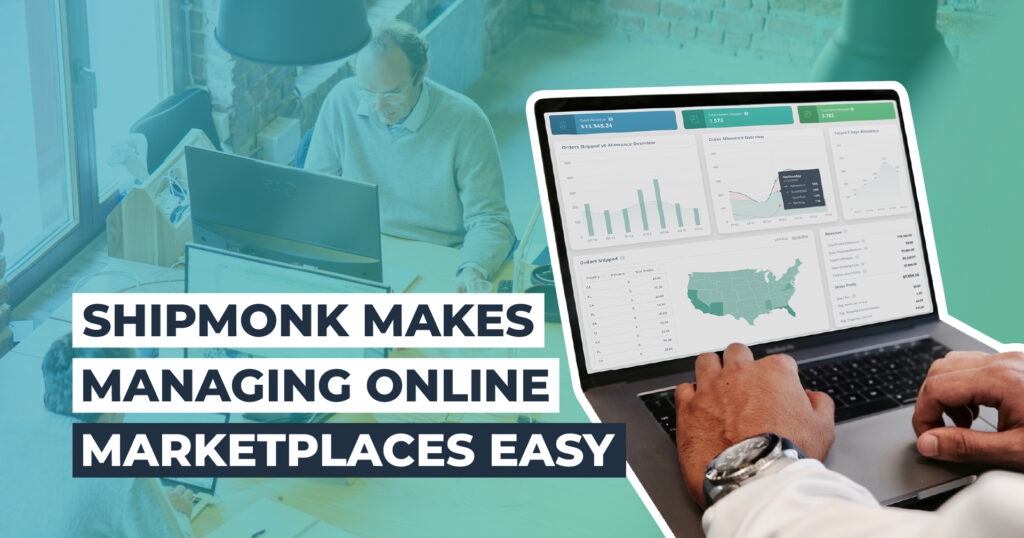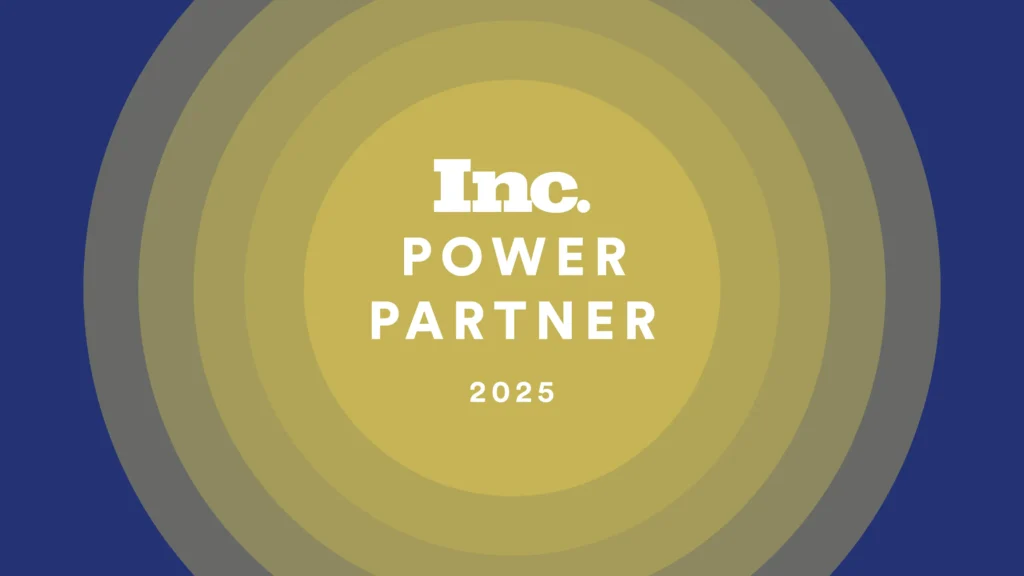It’s one thing to sell your products on Amazon. It’s another thing to be an omnichannel ecommerce brand that sells through multiple marketplaces, online retailers, social commerce platforms, plus an online store and app, all at the same time.
How do you keep track of orders when they’re coming at you from all directions, using different technologies, with different requirements for fulfillment? How do you know which channels and products are performing best, and whether you have enough inventory in the right places? Things can get messy in a hurry.
If you’re experiencing any of those issues and don’t yet have a third-party logistics and fulfillment partner (or you have one but they’re not keeping up) we congratulate you on your survival skills. But help is on the way.
Let’s look at some of the challenges of working with multiple marketplaces, and the benefits of working with a 3PL like ShipMonk to overcome these challenges.
What’s So Hard About Marketplaces?
Hmm, where to start. How about the fact that they all do things differently? Different ordering and invoicing systems. Different requirements for becoming a seller. Different fulfillment processes. Different packing and labeling requirements. Different performance standards and shipping capabilities that must be maintained. Even if you’re only working with one marketplace, the process is completely different than managing your own DTC sales and fulfillment. Here are some of the challenges that come with marketplaces.
Tech Integrations
Each marketplace has its own B2B software platform, which is probably not going to mesh with your DTC shopping platform or website. In order to become a seller on their platform, your order management software must directly integrate with their business software to accept orders, send invoices, and exchange real-time inventory data.
No Cross-Channel Visibility
When you do manage to integrate with their software platform, the sales and inventory data you get from them is strictly limited to that marketplace. If multiple marketplaces are fulfilling orders for you, it’s difficult to sync data across all channels to get accurate inventory counts and an overall picture of your performance. You are constantly switching platforms to get the data you need.
Choosing a Fulfillment Plan
When you enter into an agreement with a marketplace, you need to decide who’s going to hold more responsibility. Will you continue to fulfill your own orders, as well as returns and customer service, or will you ship your inventory to their warehouse and let them handle it all? These are two very different setups. With the first, you are considered a seller, and you continue to pick, pack and ship small customer orders as you’ve done in the past; with the second you are more like a wholesaler that packs large pallets of inventory to be shipped in bulk to another warehouse. Your fulfillment center will need to develop this capability.
Difficult to Qualify
If you want to maintain control of the fulfillment process, you may have to prove that you can meet the marketplace’s standards for speed and accuracy and order volume. To qualify for Seller Fulfilled Prime (SFP) or Fulfilled by Merchant (FBM) on Amazon, for example, you must first pre-qualify, then undergo a 30-day trial period, during which you must maintain an order-cancellation rate of less than 1% and a 99% on-time shipping rate, as well as other requirements.
Strict Requirements to Maintain Eligibility
Marketplaces usually set strict rules for their sellers to guarantee that their end customers get the same level of service across the board. There may be standards to meet regarding sales volume, product quality, on-time delivery and more. If your fulfillment center is not able to keep up with the increased order volume, for example, you could lose your Prime status.
Shipping Requirements
If you want to fulfill your own orders, you must be able to meet the shipping requirements for each marketplace. You may be forced to offer free shipping, as well as one or more expedited shipping methods, all of which are costly. If you decide to let Amazon handle your fulfillment through the FBA vendor program, there are strict rules regarding labeling, timing and routing of shipments; failure to meet their requirements may result in refusal, disposal, or return of inventory, in addition to charges for non-compliance.
This list doesn’t even touch on the other challenges of working with marketplaces, such as referral fees, pricing, control of your brand, and problems with getting your product to stand out. For a closer look at marketplaces, read Ecommerce Shopping Carts vs. Ecommerce Marketplaces, Make the Most Out of Selling on Amazon, FBA vs FBM for Ecommerce Brands, or Direct Fulfillment vs. Amazon fulfillment.
What’s So Easy About ShipMonk?
A tech-forward 3PL like ShipMonk is a must-have for omnichannel brands. Why? Because ShipMonk has the technology and the resources to handle marketplace and omnichannel fulfillment, from the tech integrations, to the centralized management system, to the labeling and shipping requirements.
Tech Integrations
Whether you’re selling via marketplaces, a branded website, app, or social commerce platform, ShipMonk makes sure your order and inventory management systems are fully integrated, so you have full control over every sales channel. Our best-in-class fulfillment software integrates with over 200 ecommerce shopping carts, marketplaces, and solution providers for plug-and-play functionality.
Industry Leading Order Management System
Orders from every sales channel, including ecommerce, retail, and wholesale operations are funneled into one centralized management system, so you have quick access to KPI dashboards, order status, inventory levels, and custom reports. And the system is cloud based, so you have the real-time data you need, and the functionality to manage it, whenever and wherever you need it.
Multiple Locations with Single-Source Control
We manage our own fulfillment centers in 8 different US locations (plus Mexico, Canada, the UK and Europe). In effect, our ecommerce clients have access to a global distribution system, enabling them to move their inventory closer to their customers and reduce shipping costs. As orders come in, they are automatically routed to the location that can ship it most affordably. Because our fulfillment centers are all under one roof, so to speak, you’re not dealing with multiple third-party vendors to meet your service level expectations. You have the same customer support contact (we call them Happiness Engineers) no matter where your orders are coming from.
Ability to Scale
ShipMonk’s focus on technology and automation means that our fulfillment centers are built for speed and efficiency. By taking advantage of all the automation and robotics the big guys use, we can easily handle spikes in order volume or rapid growth.
FBA or WFS Prep
If you decide to let the marketplace handle your fulfillment, whether through Amazon’s FBA vendor program or Walmart Fulfillment Services (WFS), ShipMonk can help with FBA Prep and wholesale orders. Our powerful B2B capabilities quickly identify the requirements needed, and ensure that your wholesale marketplace orders are prepped, packed, labeled, palletized, and shipped to comply with Amazon’s strict standards.
Affordable 2-Day Shipping
Our Virtual Carrier Network guarantees 2-day shipping to anywhere in the continental US, whether you’re shipping freight to Amazon, or a t-shirt to Tom in Tulsa. This makes it easy for our ecommerce clients to qualify for Seller Fulfilled Prime, and maintain their strict shipping requirements. All orders are tracked, and your customer service team is immediately notified of any carrier delays.
Returns Management
With every new sales channel comes more orders and more returns. If you’re handling your own fulfillment, the marketplace will also expect you to handle returns. It’s easy to get bogged down in returned merchandise if you can’t keep pace. ShipMonk offers dedicated return management services including inspection, repackaging, relabeling and restocking, liquidating, donating, recycling or disposal.
Manage your Costs
If one 3PL is handling your inventory storage, fulfillment and returns, you only have one bill to pay. There are no unexpected inventory surcharges, late fees, or removal fees. Storage and fulfillment costs are transparent, and you only pay for the space and services you use. This enables ecommerce clients to more easily control their costs and compete on price in the marketplaces they occupy.
Stress Less, Grow More
ShipMonk’s B2B fulfillment suite helps growing brands quickly master the complex challenges of retail distribution and wholesale fulfillment. Our state-of-the-art EDI-compliant technology empowers you to harness the scale of B2B capabilities so that you can “stress less and grow more!” Can your fulfillment center do all this? Talk to an expert at ShipMonk to get the support you need to manage marketplaces and omnichannel fulfillment with ease.





